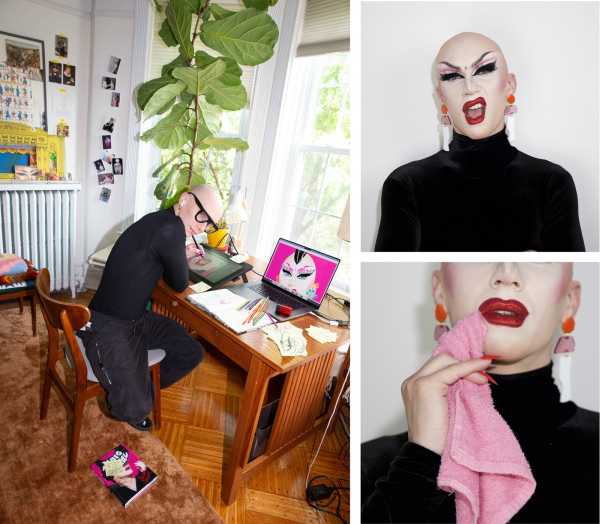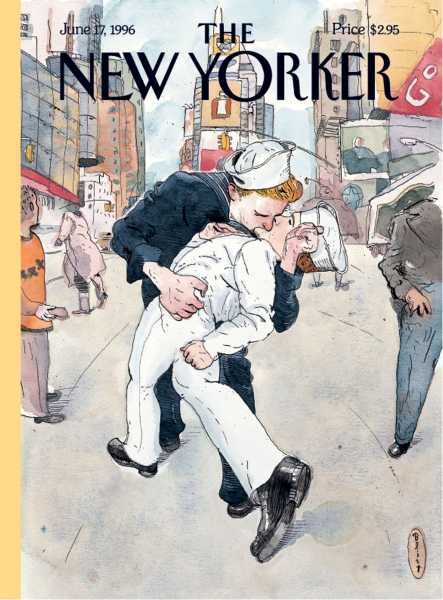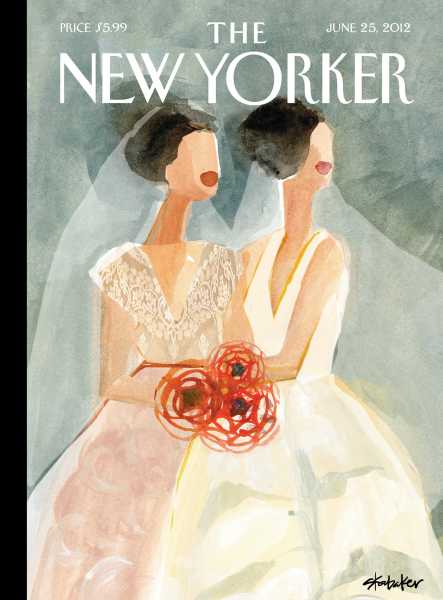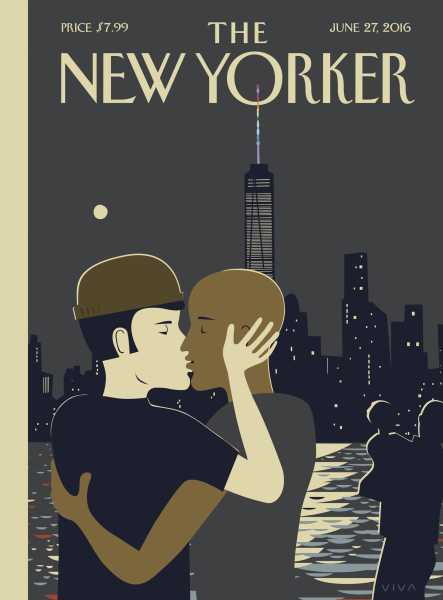
Save this storySave this storySave this storySave this story
The first of June marked the beginning of Pride Month, which was started to commemorate the 1969 Stonewall riots. This Pride season follows threats of violence in response to corporate displays of support for the L.G.B.T.Q.+ community and the widespread introduction of legislation that has led to the banning of queer children’s books from classrooms. In the face of this destructive antipathy, queer artists continue to create, claiming the power of collective and individual expression. The artist behind the cover for the June 12, 2023, issue, Sasha Velour, is a gender-fluid drag queen, author, television and theatre performer, and visual artist. In 2017, she was named the winner of the ninth season of “RuPaul’s Drag Race.” Velour, who has an M.F.A. from the Center for Cartoon Studies in Vermont, is a virtuoso of pageantry on the stage and on the page; I spoke with her recently about identity, storytelling, and queer expression.
What do you say to those who think that children should be protected from seeing drag performers?
Drag is an antidote to shame. It is pure entertainment, freedom, joy—it should be for everyone! I think children should be introduced to drag, not shielded from it. When I was a kid, I loved dressing up with my grandmothers, putting on makeup, staging shows. I didn’t even know it was “drag” but it just made sense to me. I’m so grateful that I saw movies like “Some Like It Hot” or “To Wong Foo, Thanks for Everything! Julie Newmar” when I was that age. They helped me feel normal. Later, learning more about drag and understanding the existence of queer and trans people around the world quite literally saved my life. Queer expression, including drag, is the ultimate proof that a person can decide for themselves how to dress, dance, act, and live . . . and still find success, or a life worth living. Drag shows us that we don’t need to be afraid of who we are . . . and, if anything, we should exaggerate our quirks!
So much of your drag involves creations you make yourself. What do you gain from being both designer and performer?
I joke that I’m lucky that I am a good designer and director, because I’m such a terrible dancer! But you don’t need to have any one specific skill set. You can turn anything into your signature. When people come to my shows, they know to look at all the details. I have so much fun coming up with the lighting, the video, the colors, the poster—even the overlooked “background” elements can be tools for great storytelling.
In the subtitle of your new book, “The Big Reveal,” you describe it as a drag manifesto. What are some of the greatest misconceptions about drag?
I think the biggest misconception is that we are making fun of gender, or somehow romanticizing gendered clichés. In my experience, drag is mostly about emotion, story, and beauty. The gendered aspect is simply a stage, a gesture that helps free the performer and the viewer from the supposedly realistic limitations on the world “as it is,” helping us step into the realm of fantasy. Sometimes, the character we create in drag is more authentic, more personal, more real that what we are allowed to be in our day-to-day. But the most “revolutionary” aspect of drag isn’t this act of dressing up against the rules; it’s the way we use this no-bullshit philosophy to stand up for what is right, to rally against hate for true equality in our communities.
What do cartoons and drag have in common?
I learned everything about drag by drawing myself as a superhero! I first created Sasha Velour as a comic character, and slowly became that illustration in real life, too. Comics and drag share the same idea: you take a good story, clear character design, and put in lots of hard work. At C.C.S., they taught us how to draw, self-publish, and distribute our own work with limited tools. I’ve continued to use those skills in drag: designing posters, storyboarding concepts, making things out of paper. Both comics and drag come from strong independent traditions that enable artists and performers to develop a more unique and recognizable style, and to address a wider range of political and personal topics. All you need to make art is your own self.

Velour at work on her image in her Brooklyn home.Photographs courtesy Sasha Velour
You grew up with a family that was supportive of your identity. What would you say to young L.G.B.T.Q.+ people who aren’t accepted by their families?
My advice to young L.G.B.T.Q.+ people is the message that my family instilled in me: “The world may be full of terrible people and you can’t always get what you want . . . but never let that grind you down! Miracles do happen, life is beautiful.” Even if you have to build your own family, as an adult, there are people out there who will love you for who you are, and who want to see you become your fullest, happiest self. If nothing else, know that I believe in you, and am rooting for you, diva!
See below for more covers celebrating pride:

“Don’t Ask,” by Barry Blitt

“June Brides,” by Gayle Kabaker

“Love,” by Frank Viva
Find Sasha Velour’s covers, cartoons, and more at the Condé Nast Store.
Sourse: newyorker.com